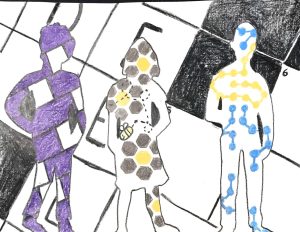New CM Policy Goes into Effect in October
CM Now Counts as Pass/Fail, Thursdays and Fridays Students Choose What to Do
September 28, 2018
This year at CRLS, CM will be a little bit different, all in the name of emphasizing the “community” in “community meeting.” CM this year is back with two major changes. First, students can now fail CM if their attendance dwindles. In an email sent to students at the beginning of July about the policy, Principal Smith explained, “Students and staff are looking for more accountability during CM. …. Students will need to attend 85% of CM per quarter to earn a Pass and four credits. If students miss CM more than three times in a quarter, they will receive a detention. Robo calls and texts will go home if students are marked tardy or absent from CM.” In addition to the new attendance policy, on Thursdays and Fridays, students will be given a little more choice around how they spend their 20 minutes with the new “Opportunity To Improve”—or OTI—blocks.
Starting Thursday, September 13, Thursday and Friday’s Community Meeting time began to take place in each teacher’s room, with half the students in one and the rest in another. At the start of October, OTI time will begin, and students will have the choice to check in with any of their teachers instead of the traditional homeroom model. Sharon Lozada, advisor to a senior CM and director of both CRLS’ STARS and mentor programs, described this time as “a chance to really connect with the people you need to connect to to make the most of your CRLS experience.”
A common concern of students about this new OTI time is that it will be too structured, and students will lose the few minutes they have to go over their homework and relax in between their stressful classes. Lozada expressed how instrumental student choice is in order for this change to work—because after all, what students need might just down time.
These changes have been brought up for a few key reasons regarding the success as a school and as a community. Attendance is very important for the district as a whole in terms of accreditation. In order for CRLS to be an accredited school and for CM to mean something on students’ transcripts, the school’s reported attendance is a major factor. Dean of Students for Learning Community R, Maria DiClemente, explained that “[Attendance is] a big deal on the school’s overall performance.” Dean of Students for Learning Community C, Susie Espinoza, said “Mandatory attendance means more students will show up, allowing a sense of community to grow.” DiClemente added, “It’s not a homeroom, it’s a community meeting.”
While some students worry about the changes, others haven’t noticed any major differences yet. Hannah Thomsen, CRLS junior, commented on the policy, “I think it hasn’t made any difference, really, in homeroom; I had no problem with our homeroom size.”
The reason for this division into two smaller groups is to create a safe place where students feel like they can voice their opinions and connect with peers on a more personal level. Lozada said the smaller size aims to further strengthen our community involvement through building connections with peers who students might not otherwise find themselves interacting with. This grouping is one of the only times at school where students don’t have a choice of who they’re with, like they do when choosing classes or clubs. The idea is that “everybody has this experience that gives them exposure to all kinds of people that are different from them,” Lozada explained.
Over the summer, some community members filled out a survey to give their idea on what community meeting setup would be best. Because this was mostly decided in the summer, CRLS will likely go through an adjustment period, DiClemente explained, and hopefully more members of the community will provide input and the administration can reassess and see how the new policies are being implemented around the end of October. As Lozada said, “If the community is going to work, we all have to own it: Teachers have to own it, students have to own it, and we have to be willing to make it everything it can be.”
This piece also appears in our September 2018 print edition.









